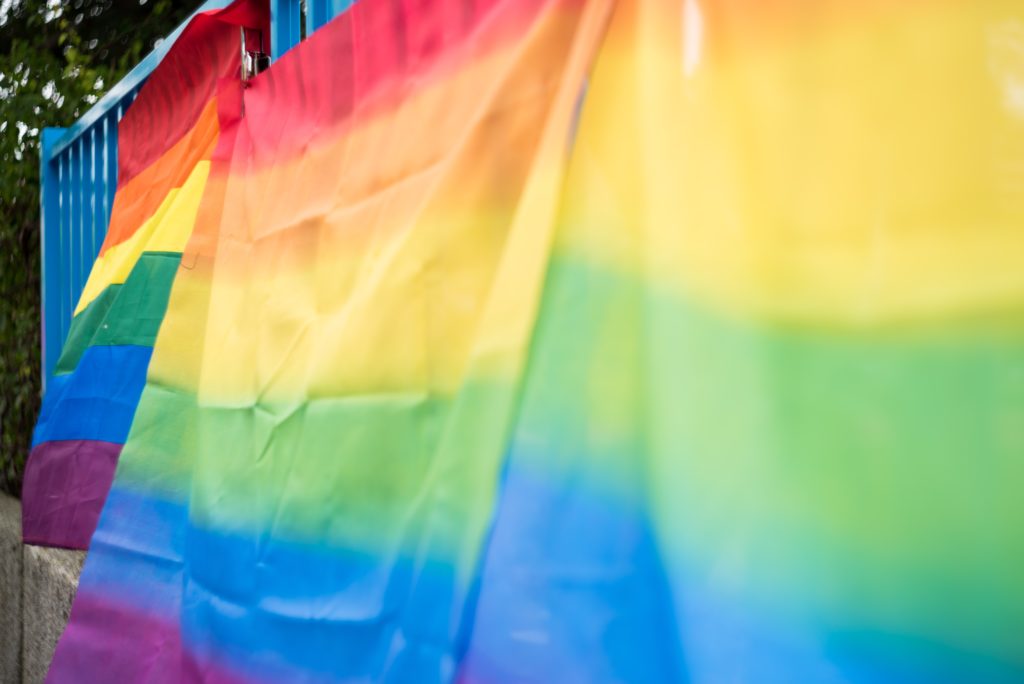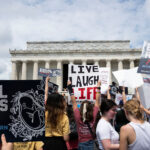
Published June 9, 2022
Flags typically serve as rallying points for unity. They point to something a culture considers sacred. The Stars and Stripes was, for many generations, precisely such a rallying point in America. The fact that flag burning, while protected by the Constitution, was deemed by both its opponents and proponents to be remarkably serious, speaks to this: One cannot desecrate that which is not considered sacred.
This is just one reason why it is interesting that the American Embassy to the Vatican is flying the rainbow flag for Pride month. Commentators have pointed out the obvious intent to cause offense to the Catholic Church. But the embassy’s decision also sends a message to the American people: Another flag has government endorsement. The message of “inclusion” that it represents signals to those Americans who might dissent from the LGBTQ+ movement that in these interesting times their membership in the republic for which the real national flag stands is more a matter of tolerance than full-blooded affirmation.
The problems with LGBTQ+ inclusion are, of course, manifold. First, there is the logical problem that any movement deploying the rhetoric of inclusion has to face: If everyone is included and nobody is excluded, then the movement is meaningless. Thus, the language of “inclusion” here is really a code word for precisely the opposite: It actually means exclusion and the delegitimizing of any person or group that dissents from what the movement’s movers and shakers deem to be acceptable opinion. Acceptable thought will typically tend toward a view of reality that regards such dissenters as mentally deficient, sub-human, or simply evil.
Second, the emphasis on inclusion must inevitably default to queerness. It is interesting how the word “queer” and its cognates is beginning to supplant the old taxonomy of “gay,” “lesbian,” and even “bisexual” in common LGBTQ+ parlance. The reason speaks to the central incoherence of the movement. Gay men and lesbian women have identities predicated upon a sex binary rooted in biology. That is rather “transphobic,” to use the psychologized terminology typically used to discredit any pushback on the transgender movement. Indeed, in the wonderful world of intersectional mythology, white gay men and white lesbian women rank little higher in the political hierarchy than their straight counterparts.
In fact, the LGBTQ+ movement has always been a marriage of political convenience. Prior to the AIDS crisis of the 1980s, lesbian women generally regarded gay men with deep suspicion, as those who enjoyed male privilege and whose sexual desires and experiences differed in fundamental ways from those of females. Only the suffering caused by AIDS gave such men victim status and drew sympathy from lesbians. Gay men and lesbian women then found common cause against the normative status of heterosexuality. As to the addition of the T, it is an interesting question how a form of body dysmorphia that is not necessarily connected to sexual desire became such a key component of the alliance. Again, the answer surely lies in common opposition to that which the movement dubs “heteronormativity.”
But a movement built on opposition to a common foe is not sufficient for long-term unity, especially when that common foe itself becomes culturally weak and implausible and when the positive affinities between the constituent members are not only very weak but, in the case of the L and the G relative to the T, actually antithetical to each other. When you then throw into the mixture the fact that queer and trans identities are detached from any stable biological foundation, the recipe for identity chaos is obvious.
And this brings us back to the question of the flag. The Pride flag itself is now in the state of flux to which the notion of inclusion detached from any objective foundation must inevitably lead. There is an intersex inclusive flag. There is a Progress Pride flag. There is a polysexual Pride flag. In fact, there are now over fifty Pride flags, and, given the numerous intersectional variations, the number is likely to keep increasing.
All of this speaks of a movement that is, at its core, incoherent. This movement’s incoherence, notionally referred to as “inclusion,” is likely to become more and more problematic as the years pass. And that raises two questions.
The first is a somewhat amusing one: Has the Biden administration, in flying the traditional rainbow Pride flag, inadvertently excluded or snubbed the 50+ sexual and gender minorities that now boast their own pennants? That, of course, is the perennial risk of the cheap virtue signaling to which the Biden administration is prone, built as it is on the shifting sands of political tastes. The president is going to have to authorize much larger flagpoles, or much smaller flags, if he is to appeal to the entire rainbow alliance and include everyone.
The second question is more serious. For a flag to be a powerful, sacred symbol of unity and purpose, it has to symbolize a real common sense of unity—a unified moral vision around which individuals can rally as part of a larger imagined community. That the Pride flag already has so many variations reveals the lack of unity that has always marked the LGBTQ+ movement when the cameras were not rolling. This disunity has only become more obvious with the advent of intersectionality and the triumph of queerness and transgenderism. So it is significant when a nation decides to endorse the Pride flag and thereby incorporate its moral vision into its national ethos. And it raises this question: If the Pride flag cannot even hold together the community for which it claims to stand, how can it possibly offer a stable vision for a nation and its national culture? By flying the Pride flag at U.S. embassies, the Biden administration indicates that it thinks that it can. The 50+ variations would seem to suggest the opposite. Queer nation will ultimately prove to be no nation at all.
Carl R. Trueman is a fellow in EPPC’s Evangelicals in Civic Life Program, where his work focuses on helping civic leaders and policy makers better understand the deep roots of our current cultural malaise. In addition to his scholarship on the intellectual foundations of expressive individualism and the sexual revolution, Trueman is also interested in the origins, rise, and current use of critical theory by progressives. He serves as a professor at Grove City College.
Image: Abby Chung via Pexels
Carl R. Trueman is a fellow in EPPC’s Evangelicals in Civic Life Program, where his work focuses on helping civic leaders and policy makers better understand the deep roots of our current cultural malaise. In addition to his scholarship on the intellectual foundations of expressive individualism and the sexual revolution, Trueman is also interested in the origins, rise, and current use of critical theory by progressives. He serves as a professor at Grove City College.










